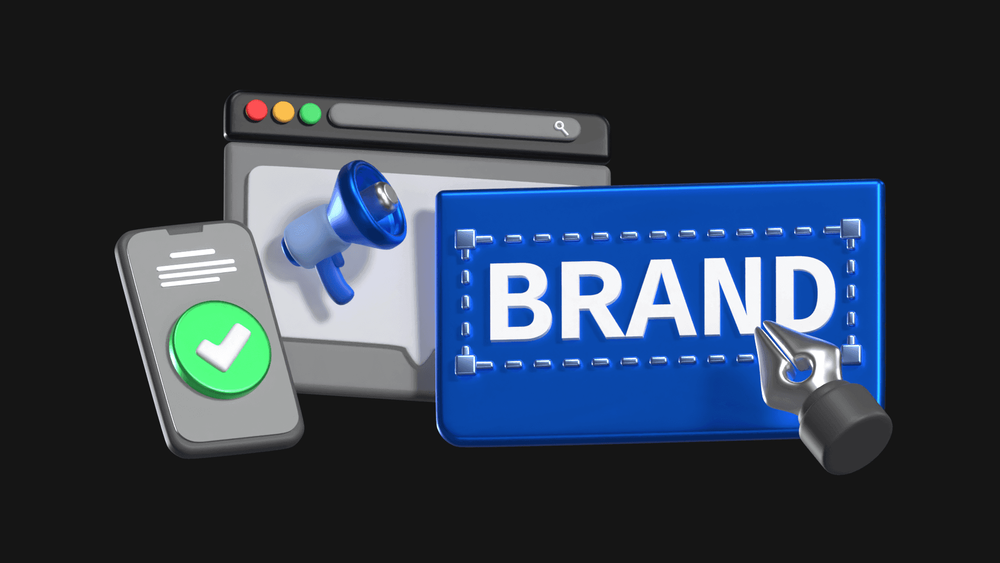Have you ever wondered why you instantly recognize certain brands just from their logos or jingles? Or why do you feel a sense of loyalty towards certain products or companies? This is the magic of effective brand marketing strategy.
It's more than just selling products or services; it's about weaving a story, establishing a connection, and building a loyal following.
In this article, we'll unpack the definition of what is brand marketing, explore real-world examples, and equip you with the strategies to craft your own strong brand marketing identity.
What Is Brand Marketing?
Brand marketing is the process of promoting a company's or product's brand to increase brand awareness and loyalty. It involves creating a unique image and voice for your business that sets it apart from competitors and resonates with your target audience.
At its core, successful brand marketing strategy is about building an emotional connection with consumers rather than simply focusing on tangible features or benefits. It's about capturing hearts, minds, and ultimately, wallets.
We have branding guides for different industries such as perfume branding, food branding, and salon branding if you're interested.
Why Is Brand Marketing Important?
As consumers are bombarded with endless options in the marketplace, a strong brand can be the differentiating factor that sets your business apart. It creates an identity, brand equity and reputation that consumers can relate to and trust, leading to increased sales and customer retention.
In fact, studies have shown that customers are willing to pay a premium for products or services from brands they trust and feel connected to.
Key Components of Brand Marketing Strategy
Brand Identity Development
Crafting a strong brand identity is like building a magnetic personality for your business. It's what makes you stand out in a crowded marketplace and resonates deeply with your ideal customers.
The foundation of a powerful brand identity lies in understanding yourself. What are your core values and mission? What makes you unique? Once you have a clear vision, you can translate it into tangible elements.
This includes your visual identity in branding design: your logo, color palette, and typography. Every choice should contribute to a cohesive look and feel that reflects your brand's essence.
But brand identity goes beyond aesthetics. It's also about your voice and tone in communication. Are you playful or authoritative? Informative or inspiring? Consistency across all touchpoints ensures a clear and memorable brand experience.
Brand Communication
Brand communication is how you spread the word out strategically to connect with your target audience.
Every interaction, from social media posts to customer service conversations, is an opportunity to communicate your brand's story. The key is to craft messages that are clear, consistent, and resonate with your audience's needs and aspirations.
Don't just tell them what you do, tell them why it matters. By weaving your brand values and mission into your communication, you build emotional connections that go beyond transactions. Effective brand communication fosters trust, customer loyalty, and ultimately, brand advocacy.
Customer Experience
Your brand's identity: identity and communication lay the foundation, but it's the customer experience that truly brings it to life. When someone interacts with your brand, they should feel like they are part of a meaningful journey.
Consider all touchpoints in the customer journey, from the first point of contact to post-purchase interactions. How can you make each step a positive and memorable experience? This could include personalizing communication, offering exceptional customer service, or creating convenient and seamless processes.
By prioritizing the customer experience, you not only build a strong and loyal customer base but also a solid brand marketing strategy to differentiate yourself from competitors.
Examples of Successful Brand Marketing
Now that we've discussed the importance of brand communication and customer experience, let's look at some real-life examples of successful, brand marketing campaigns.
1. Nike
Nike has built a strong and recognizable brand through consistent messaging and powerful storytelling. They focus on empowering and inspiring athletes, which resonates with their target audience.
Their "Just Do It" campaign is a prime example of effective brand communication, encouraging customers to push themselves beyond their limits and embrace a can-do attitude.
Nike also prioritizes the customer experience by creating innovative products that enhance performance and offering personalized options through their NikeID program. They have also developed a strong social media presence, engaging with customers and building a community through shared values.
2. Airbnb
Airbnb has disrupted the hospitality industry by creating a unique and personalized customer experience. Their brand is all about connecting people and fostering a sense of belonging, which is reflected in their marketing messages.
Their "Don't go there. Live There" campaign showcases the local and authentic experiences available through Airbnb, appealing to travelers who want more than just a place to stay. They also prioritize customer experience by providing 24/7 support and building trust through user reviews.
3. Coca-Cola
Coca-Cola has maintained a strong and consistent brand image for over 100 years. Their iconic red and white branding, along with their catchy slogans and memorable ads, have made them one of the most recognizable brands in the world.
They also prioritize the customer experience by creating products that cater to different tastes and preferences, such as sugar-free options and limited edition flavors. Coca-Cola also uses social media to engage with their audience, often incorporating user-generated content into their campaigns.
4. Apple
Apple has built a loyal fan base through consistent messaging of innovation, simplicity, and user-friendliness. They have created a culture around their brand, with customers eagerly anticipating new product releases and standing in long lines to be the first to get their hands on the latest technology.
Apple's sleek and minimalist branding carries through all aspects of their customer experience, from their packaging to their retail stores. Their attention to detail and focus on user experience has made them a leader in the tech industry.
Getting Started with Brand Marketing
- Define Your Brand Identity: Clearly outlining your brand's mission, values, and unique selling propositions is the first step. This foundational understanding ensures that every piece of communication aligns with your brand's core essence.
- Consistency is Key: Ensure your brand voice, colors, characters or mascots, and messaging are consistent across all platforms, from social media to print advertisements. Consistency builds recognition and trust among your audience.
- Engage with Your Audience: Interact with your customers on social media, respond to their comments, and encourage user-generated content. Authentic engagement fosters a sense of community and loyalty around your brand.
- Leverage Influencer Partnerships: Collaborate with influencers who align with your brand values. Influencers can help amplify your message and reach a broader audience, lending credibility to your brand.
- Utilize Content Marketing: Develop a content strategy that provides value to your audience. Whether through blogs, videos, or podcasts, delivering valuable content helps position your brand as an authority in your industry.
Resources and Tools
- Social Media Management Tools: Platforms like Hootsuite and Buffer allow you to schedule posts, track engagement, and analyze performance across multiple social media channels.
- Graphic Design Software: Pixcap is a user-friendly design tools that can help you create beautiful graphics for social media, website, and print materials.


- Email Marketing Platforms: Services like Mailchimp and Constant Contact enable you to design professional-looking emails, manage mailing lists, and track campaign performance.
- Analytics Tools: Google Analytics and Sprout Social provide insights into website traffic and social media performance, helping you make data-driven decisions to enhance your brand marketing efforts.
For detailed reviews on the best tools for branding, read our article 12 Best Branding Tools Your Business Must Use in 2024
Brand Marketing vs. Product Marketing
While brand marketing and product marketing are often interlinked, they serve distinct purposes and strategies within a business's overall marketing efforts.
Brand marketing focuses on promoting the overall perception and image of the company or brand. It's about creating a lasting impression, fostering emotional connections, and establishing a sense of brand loyalty and trust over time. This encompasses everything from visual identity (logos, colors, design) to the consistent voice and messaging that resonates with the target audience.
On the other hand, product marketing is centered on the specific features, benefits, and selling points of individual products or services. It involves launching new products, highlighting innovations, and communicating the tangible advantages that set the product apart in a competitive marketplace. Product marketing bridges the gap between the product and the consumer by addressing direct needs and showcasing how the product solves particular problems.
In general, while strong brand marketing strategy builds the foundation and long-term emotional ties with the audience, product marketing provides the compelling reasons to drive immediate purchases.
Both are essential for a thriving business, but they require different approaches and metrics for measuring success. Effective marketing strategies often integrate both brand and product marketing to create a cohesive and powerful presence in the market.
Conclusion
Creating a strong brand is essential for any business looking to attract and retain customers. By following the brand guidelines and brand marketing tactics outlined in this article, you can establish a cohesive and memorable brand.
Remember to stay consistent across all aspects of your branding, engage with your audience, leverage influencer partnerships, and utilize content marketing to build trust and credibility around your brand.




